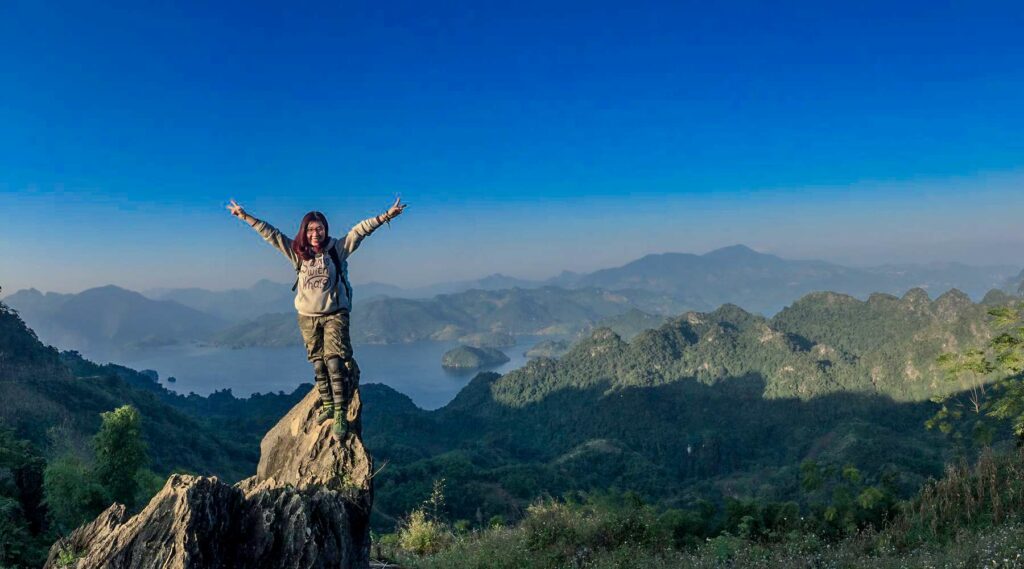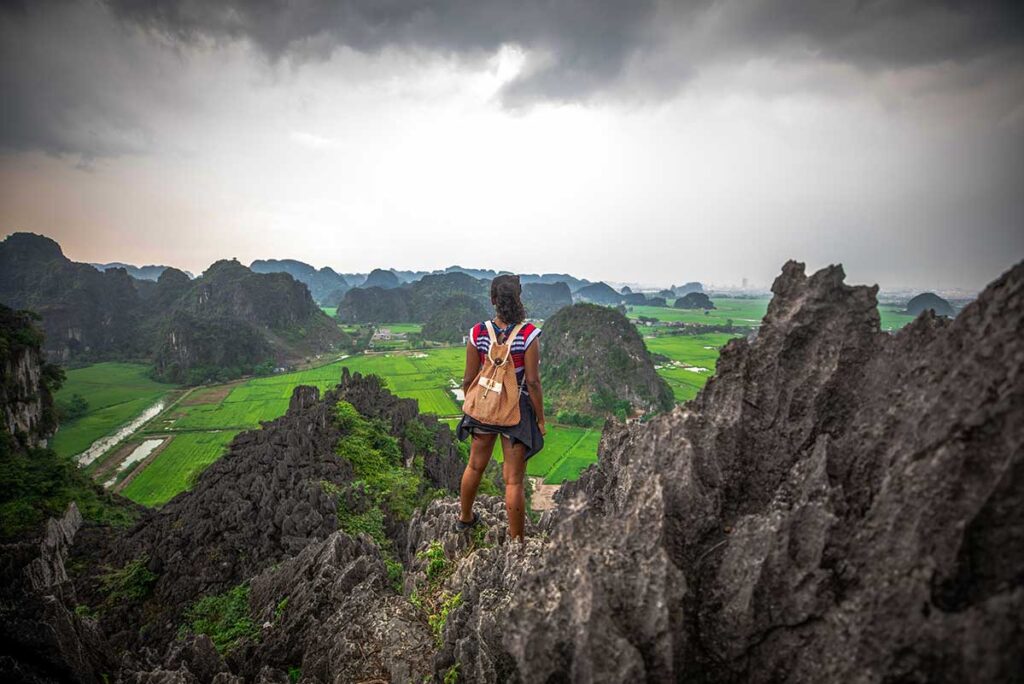What is Pha Luong Peak like?
Pha Luong Peak rises to nearly 2,000 meters and is often called the Roof of Moc Chau. Located directly on the Vietnam–Laos border, the summit offers panoramic views into both countries from a dramatic, high-altitude plateau. Unlike many other Vietnamese peaks, Pha Luong’s summit is wide, flat, and marked by striking rock formations, including a ledge nicknamed the “outstretched hand,” now a favorite photo spot.
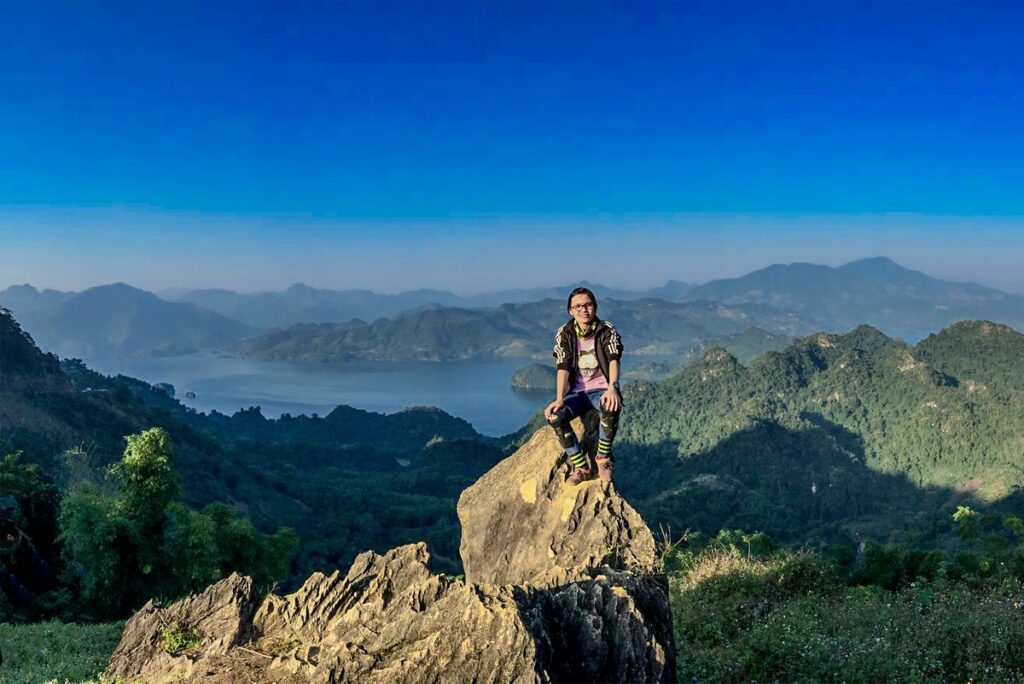
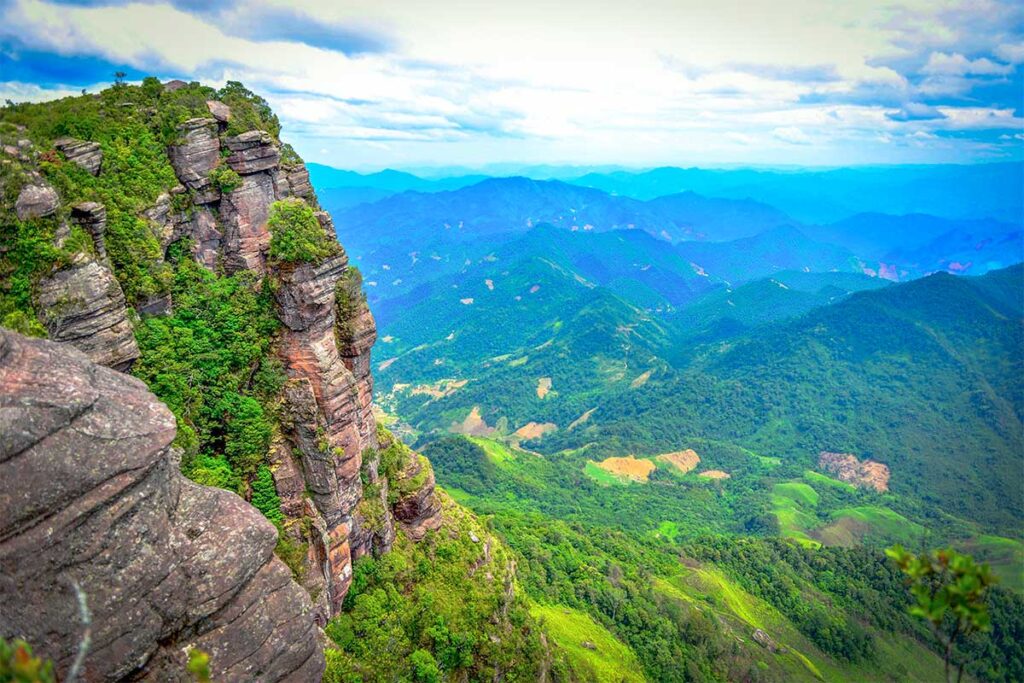
The trail passes through moss-covered forests, rice terraces, and towering cliffs before reaching the exposed, windswept top. Because of its position in a restricted border zone, permits are required—and foreign travelers may face extra entry rules. While it’s a well-known challenge among Vietnamese trekkers, very few international visitors make it here.
The area remains isolated and undeveloped, with no tourism infrastructure at the summit. That sense of remoteness is part of the appeal—trekking Pha Luong feels like stepping into untouched mountain wilderness.
Permits and Border access
Pha Luong lies in a sensitive border area between Vietnam and Laos, and access is controlled by the border guards at the Pha Luong Border Station. All visitors must register here before starting the hike.
- Vietnamese travelers can leave their passport or ID at the station—no special permit is usually required.
- Foreign travelers may need a separate permit issued in Son La Province. This rule is not always enforced the same way, but some foreigners have been denied entry at the checkpoint even with a local guide.
If you’re a foreign visitor, it’s safest to arrange your visit through a local guide or travel agency who can help with the permit process. You should also bring your passport and arrive before noon, as the station does not allow late-day starts.
How to get to Pha Luong Peak
Moc Chau is the best base for visiting Pha Luong Peak. While not yet a major stop for foreign tourists, it’s popular among Vietnamese travelers and has plenty of accommodation options. Getting to Moc Chau is straightforward — there are daily buses and limousine vans from Hanoi. (Read our guide: From Hanoi to Moc Chau)
From Moc Chau town, it’s about 30 kilometers to the Loong Sap border checkpoint, which follows a paved, scenic road through tea hills and pine forests. This stretch is manageable by car or motorbike and takes about an hour.
After Loong Sap, the road continues roughly 7–10 kilometers to Pha Luong Village. This section turns into a steep and narrow dirt track, often damaged by rain. In dry weather, confident riders can manage it by motorbike, but in wet conditions it’s extremely slippery and dangerous.
The final stretch — from the village to the Pha Luong Border Station — is only accessible on foot or by motorbike. There is no public transport, so you’ll need to arrange a private vehicle, go by motorbike, or join a local guide who can assist with logistics.
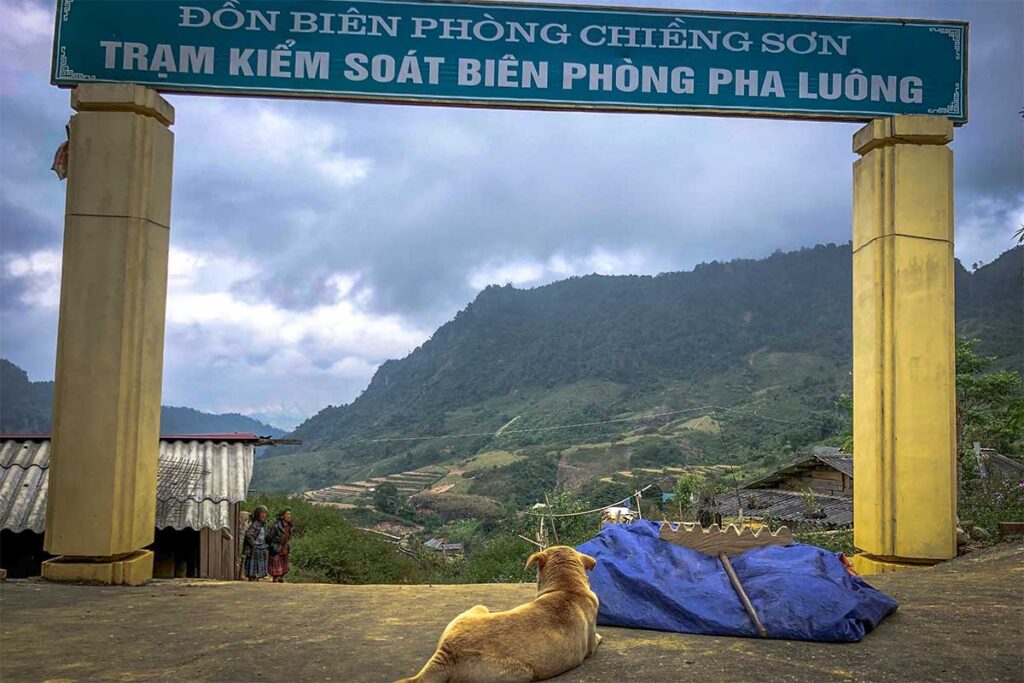
You must arrive at the border station before noon to begin the trek. All travelers must leave their passports with the guards, and as noted earlier, foreigners may require a separate permit from Son La Province to access the trail.
Trekking to the summit
The trek to Pha Luong Peak takes about 3 to 4 hours uphill and 1.5 to 2 hours on the way down, depending on your pace and weather conditions.
The trail begins with open terrain, passing through grassy slopes and Hmong rice terraces. This section is exposed to the sun, so early starts and sun protection are important.
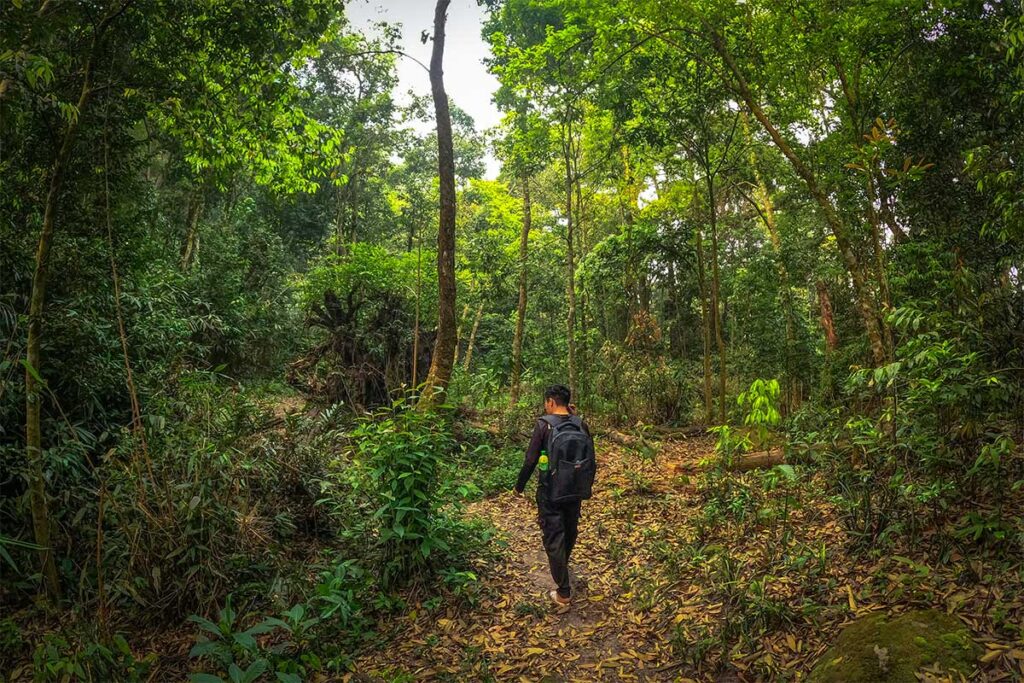
After about 30–45 minutes, the path enters a dense forest. Here you’ll follow narrow trails lined with vines, tall trees, and large moss-covered boulders — a signature feature of Pha Luong’s landscape. The climb becomes steeper and more humid, but also more shaded.
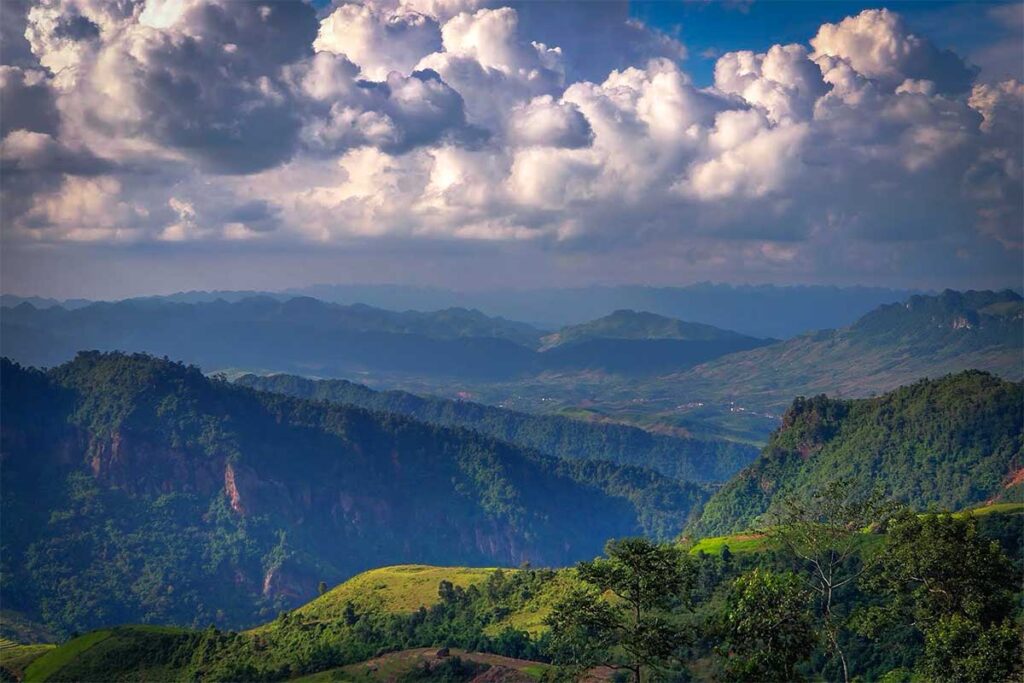
As you near the top, the forest thins out and gives way to wind-exposed rocky surfaces. The final approach includes stacked cliffs, crevices, and narrow ledges, with sweeping views already beginning to appear.
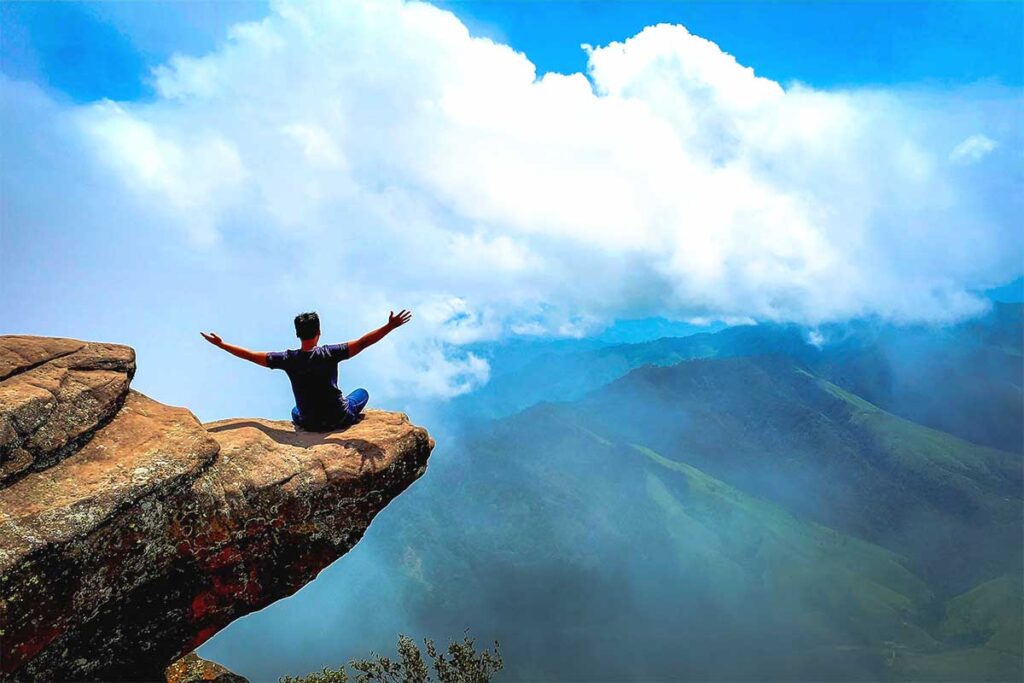
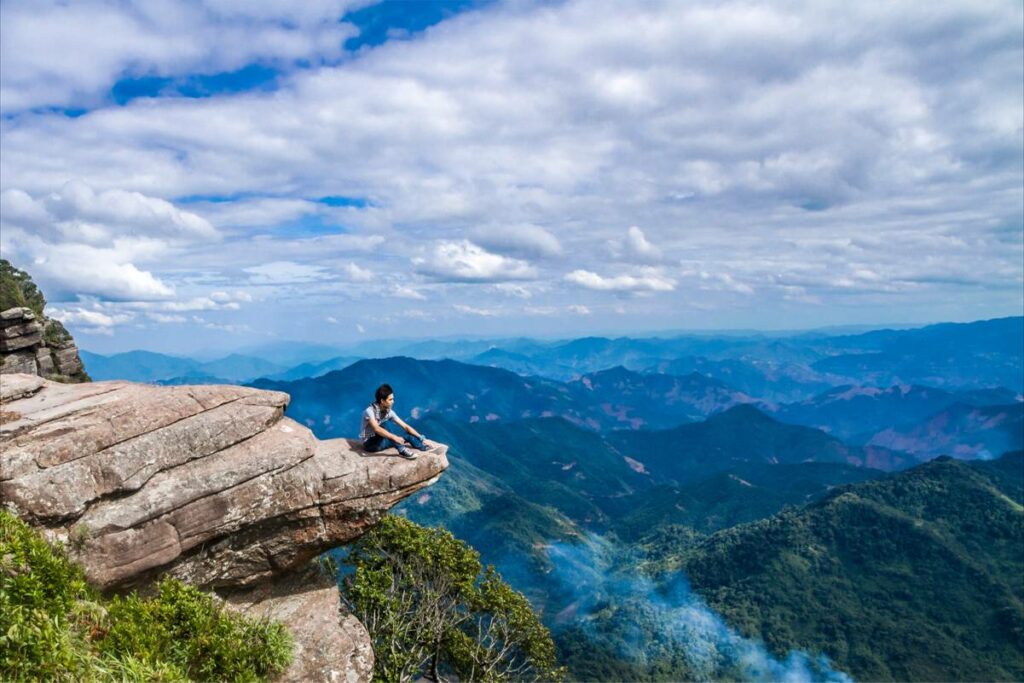
At the summit, you’ll find a surprisingly wide, flat plateau — more open than most Vietnamese peaks. The area is dotted with unusual rock formations, including the iconic ledge often seen in photos, where hikers stand above the cloud-covered valleys.
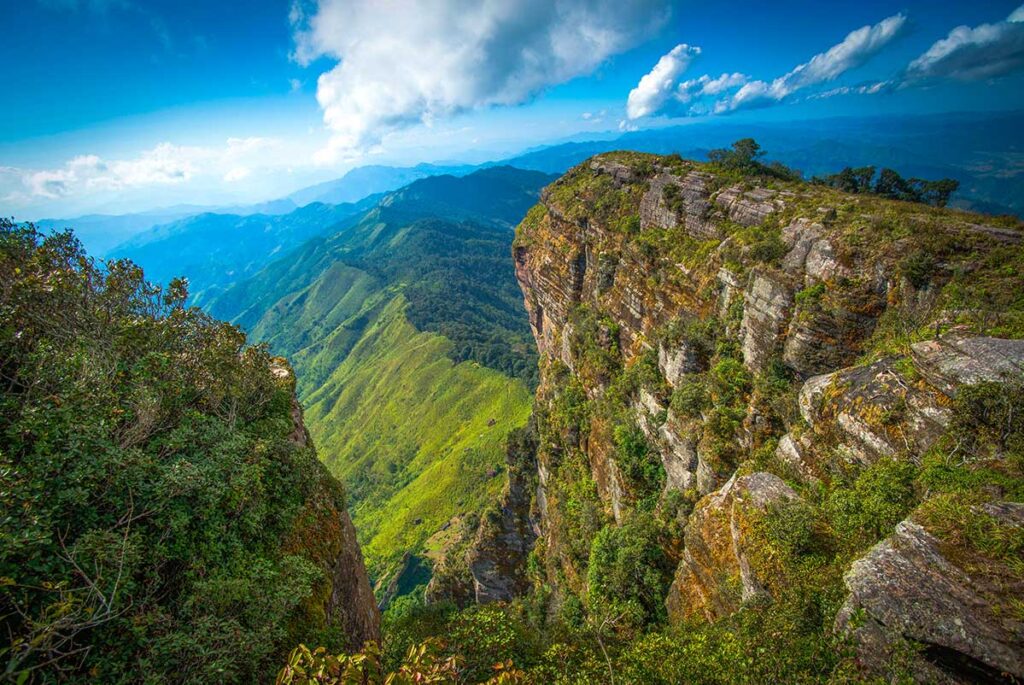
From the top, you can clearly see the border zone stretching into Laos on one side and Vietnam’s forests and farmlands on the other.
The descent follows the same trail. Once you’re back at the border station, don’t forget to collect your passport before leaving.
Best time to visit Pha Luong
The best time to trek Pha Luong is during the dry season from December to April, when the skies are clearest and the trail conditions are safest. This period offers the best visibility at the summit, and lower risk of slippery terrain.
September and October are also a beautiful time to visit. The forest foliage begins to change color — including some rare maple trees that turn yellow and red — but you’ll need to watch for heavy rain or typhoons, which can make both the road and trail dangerous.
From November to February, misty mornings are common, creating a moody and dramatic atmosphere, especially in the forest. However, it can be cold at the top, and winds are often strong near the summit.
No matter when you go, always check the weather forecast before departing. The trail becomes very slippery and potentially unsafe in wet conditions, and cloud cover can completely block summit views.
What to bring
- Passport – Required for all visitors at the border checkpoint.
- Permit – Foreigners should arrange this in advance through Son La authorities or via a trusted local guide.
- Warm clothing – The summit can be windy and cold, especially from November to February.
- Good hiking shoes – The trail includes uneven forest paths, muddy sections, and slippery rocks.
- Rain protection – A poncho or waterproof jacket is essential if rain is in the forecast.
- Sun protection – Bring a hat and sunscreen; the first part of the trail is exposed.
- Food and water – Carry all your supplies. There are very few stalls along the route, and none at the top.
- Camera or phone – The views from the summit are a highlight of the trek.
- Optional: Gloves, trekking pole, or walking stick can help with grip and balance, especially on the descent.
Is Pha Luong worth visiting?
Yes — but only if you’re prepared.
Pha Luong Peak offers a dramatic, off-the-beaten-track experience with panoramic views into Laos and Vietnam. The hike is challenging but rewarding, and there are no crowds, no shops, and no development — just nature. It’s best for fit travelers who enjoy remote trekking and don’t mind rough conditions.
The main obstacle is the permit
Foreigners must get prior approval to enter the border zone. This is not available on-site and often requires advance paperwork in Son La City — a different town from Moc Chau. If you’re not sure how to arrange this, it’s safer to go with a local guide who can help with the permit, transport, and trek.
If that sounds like too much trouble…
You might want to consider Ta Xua instead. It’s farther from Moc Chau but easier to reach from Hanoi. Ta Xua has beautiful cloud views, a variety of hiking routes (from light to tough), and no permit requirements. It can be busy on weekends with domestic tourists, but the scenery is just as striking — and the logistics are far simpler. See our full guide to Ta Xua for details.
What else to do nearby
Whether you plan to conquer Pha Luong Peak or decide against it due to the permit requirements, this part of Moc Chau is still well worth a visit. The region is known for its tea plantations, pine forests, flower fields, and cool climate — a favorite getaway for domestic travelers.
Some popular highlights include the Moc Chau Tea Hills, the scenic Dai Yem Waterfall, the peaceful Ang Village Pine Forest, and the blooming flower gardens (best in late winter and spring). You can also visit local ethnic markets or explore nearby caves and valleys.
See our full Moc Chau travel guide for more things to do and where to stay.
